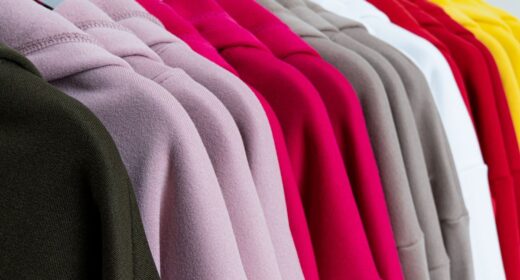If you’ve ever wanted to witness the high-stakes drama of a sneaker soap opera, look no further than the lawsuit brewing between Nike and the Shoe Surgeon.
For the uninitiated, the Shoe Surgeon—a.k.a. Dominic Ciambrone—is a celebrated name in the sneaker world, crafting bespoke kicks that transform footwear into wearable art. Nike, the footwear powerhouse, has stepped up as the self-appointed referee, claiming Ciambrone’s custom designs are playing too close to their trademarked goalposts. Let’s lace up and dig into this legal tango —because nothing says high drama like a courtroom showdown over sneakers.
Nike’s lawsuit alleges that the Shoe Surgeon’s custom designs infringe on their trademark rights. In their legal filing, Nike asserts that altering their iconic sneakers could lead to consumer confusion. The Shoe Surgeon’s team, however, positions his work as art rather than infringement, basically saying, “We’re not making knockoffs—we’re Picasso-ing your kicks.” After all, these are not your standard sneakers; these are one-of-a-kind creations that scream “I’m an individual with impeccable taste”—and probably a big bank account.
The Shoe Surgeon’s response also includes counterclaims against Nike, alleging defamation and unjust enrichment. Ciambrone’s team points out that his customizations are built on authentic Nike footwear, transforming mass-produced products into unique artistic creations. They’ve even referenced past collaborations with Nike to suggest that the company had, at one point, tacitly endorsed customization efforts. It’s like calling out a friend who suddenly decided your shared inside jokes are now off-limits—awkward.
Adding even more flair to this legal drama, Ciambrone’s history with Nike includes crafting some truly jaw-dropping custom designs, like a $100,000 gold sneaker to commemorate LeBron James’ 30,000th career point. More recently, he designed the Nike LeBron 20 “The Moment,” celebrating James’ rise to become the NBA’s all-time leading scorer. It’s a sneaker story that’s one part art exhibit, one part trophy case, and 100% “who’s cooler than me?”
Yet Nike claims that Ciambrone has used their past collaborations to legitimize unauthorized activities, including conducting classes and seminars that allegedly lean heavily on Nike’s intellectual property. It’s a complicated relationship: one moment you’re designing history-making sneakers together, and the next, you’re squaring off in court. Honestly, it’s like a Hollywood breakup—except with fewer tabloid covers and more Swooshes.
The question of consumer confusion takes center stage in this case. Buyers of these high-end custom sneakers, often passionate sneakerheads, are well aware that these pieces are bespoke and distinct from mass-market offerings. Let’s be real: no one is walking into a boutique sneaker shop and mistaking a $10,000 python-skin Jordan for a retail Air Max. If anything, these customers are the sommeliers of sneakers, not the kind of people who confuse haute couture with off-the-rack.
Nike is seeking $60 million in damages, a figure that could make even the most dedicated sneakerhead gasp mid-unboxing. That’s the equivalent of about 300,000 pairs of standard Jordans or enough money to bankroll an indie film about this entire drama. It’s a number that clearly signals Nike isn’t messing around—but it also makes you wonder if this is about more than just dollars and cents. Maybe it’s about dominance—or just plain old-fashioned flexing.
This legal battle also highlights a broader conversation about creativity and intellectual property in the fashion and design industries. Customization has long been a way for artists to reinterpret existing products, blending personal expression with established designs. But where does innovation end and infringement begin? It’s a tightrope walk that both brands and creatives have to navigate—preferably in some very stylish sneakers.
At the heart of this case is a dialogue about innovation, artistry, and the responsibilities of both creators and corporations. Nike’s argument is clear: their designs are their intellectual property, and they’re entitled to protect them. Meanwhile, the Shoe Surgeon’s work raises the question of how far artistic freedom can stretch before it trips over legal boundaries.
For now, the sneaker community is watching closely as this case unfolds, popcorn in one hand and sneaker cleaning kits in the other. Whether in the courtroom or on the streets, the world of sneakers continues to evolve, fueled by both corporate innovation and individual artistry. One thing’s for sure: this showdown is one for the books, and the sneaker world will be all the more colorful (and dramatic) for it.
Is Nike safeguarding its legacy, or is this a step too far? Let us know where you stand—team Swoosh or team Surgeon?




